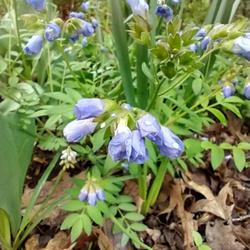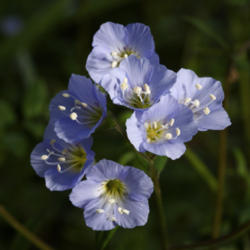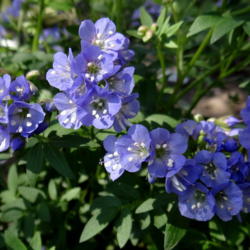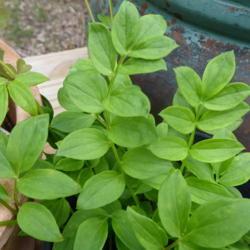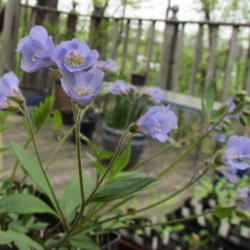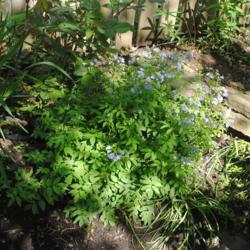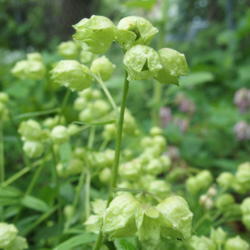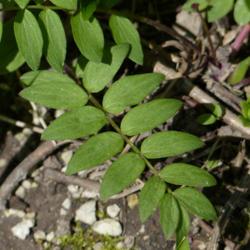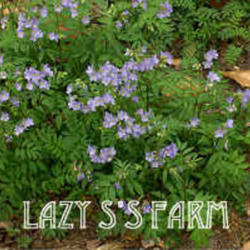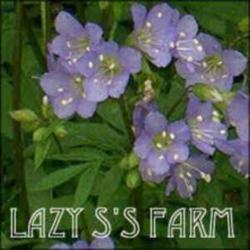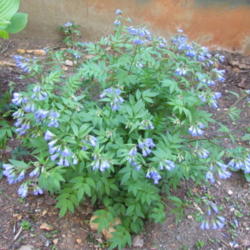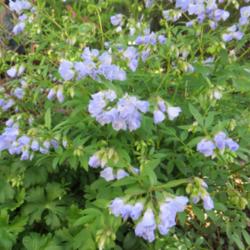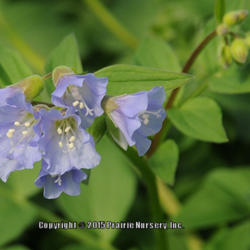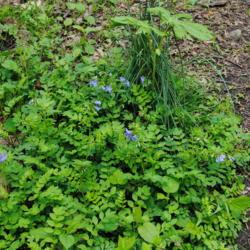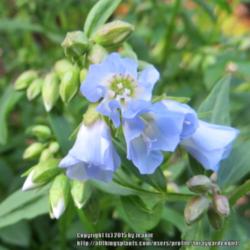Posted by
Cyclaminist (Minneapolis, Minnesota - Zone 5a) on Apr 29, 2016 6:50 PM concerning plant:
This plant produces a ton of food for native bees during its spring bloom time. New flowers open every day, renewing the supply of pollen and nectar. The flowers are a lovely shade of sky blue and have a slight sweet fragrance. Highly recommended for shade gardens in the eastern United States and Canada. Feed the bees and enjoy the flowers.
According to Heather Holm's Pollinators on Native Plants, it feeds both long-tongued bees (for instance, bumblebees) and short-tongued bees (for instance, sweat bees, mining bees, and small carpenter bees), which drink nectar or gather pollen and nectar for their nests. It is also sometimes visited by beetles and hoverflies (also known as flower flies and syrphid flies), which eat pollen. The larvae (babies) of several hoverflies eat aphids. Larger bees are the most effective pollinators, because they come into contact with the anthers and stigma more frequently than smaller bees.
Posted by
ILPARW (southeast Pennsylvania - Zone 6b) on May 14, 2019 10:41 AM concerning plant:
Beautiful, delicate-looking native forb native from southeast Oklahoma up into central Minnesota into New Hampshire down to northern Georgia & Alabama, plus some of southeast Canada, growing in humus rich, moist, well-drained soils in part to full shade. Despite its name of "creeping" (in Latin "reptans") it really sprawls with shallow rhizomes to create a mound about 2 feet wide. The pinnate compound leaves of this genus are arranged like the rungs of a ladder, thus the name "Jacob's Ladder." This species has 7 to 15 oval leaflets in each whole leaf. The plant usually does not go dormant, unless there is a strong drought, to come back later. The light blue bell-shaped flowers are to 3/4 inch long and are followed by tan fruit. It can self-sow around. It is sold by larger, diverse conventional nurseries in their perennial section and by many native plant nurseries. It is resistant to Black Walnut juglone toxin. Larger clumps can be divided in late summer.
Posted by
jmorth (central Illinois) on Jan 15, 2012 3:50 PM concerning plant:
An Illinois wildflower found in moist woods, woodlands, prairies, and fens.
Menomini tribe used plant to treat skin sores and eczema. Mesquakie and Potawatami used it to treat hemorrhoids. Root tea used to induce sweating, treat fevers, snakebites, bowel problems, and breathing afflictions.

